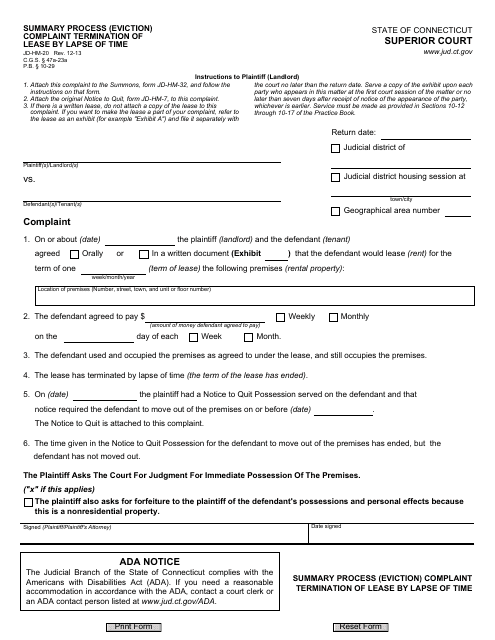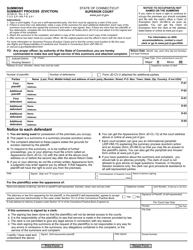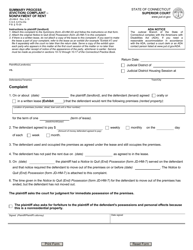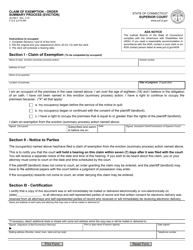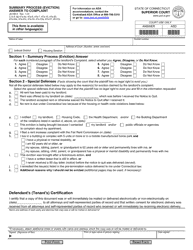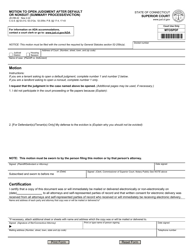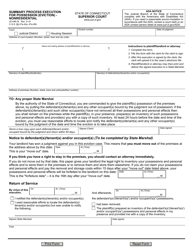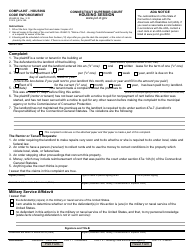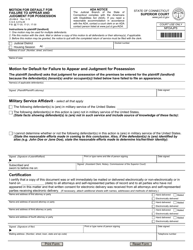This version of the form is not currently in use and is provided for reference only. Download this version of
Form JD-HM-20
for the current year.
Form JD-HM-20 Summary Process (Eviction) Complaint, Termination of Lease by Lapse of Time - Connecticut
What Is Form JD-HM-20?
This is a legal form that was released by the Connecticut Superior Court - a government authority operating within Connecticut. As of today, no separate filing guidelines for the form are provided by the issuing department.
FAQ
Q: What is a JD-HM-20 Summary Process (Eviction) Complaint?
A: It is a legal document used in Connecticut to initiate eviction proceedings.
Q: What does 'Termination of Lease by Lapse of Time' mean?
A: It means the lease has ended because the agreed-upon time period has expired.
Q: Who can use the JD-HM-20 Summary Process (Eviction) Complaint?
A: Landlords in Connecticut who want to evict a tenant can use this form.
Q: What should be included in the JD-HM-20 Summary Process (Eviction) Complaint?
A: The complaint should include the tenant's name, the reason for eviction, and any relevant supporting documentation.
Q: What is the process after filing the JD-HM-20 Summary Process (Eviction) Complaint?
A: Once filed, the court will schedule a hearing date, and both the landlord and tenant will have an opportunity to present their case.
Q: What are the possible outcomes of a JD-HM-20 Summary Process (Eviction) Complaint?
A: The court may grant an eviction order, require the tenant to remedy the situation, or decide in favor of the tenant.
Q: What are the legal consequences of a JD-HM-20 Summary Process (Eviction) Complaint?
A: If the court grants an eviction order, the tenant may be required to vacate the premises and may have an eviction record.
Form Details:
- Released on December 1, 2013;
- The latest edition provided by the Connecticut Superior Court;
- Easy to use and ready to print;
- Quick to customize;
- Compatible with most PDF-viewing applications;
- Fill out the form in our online filing application.
Download a fillable version of Form JD-HM-20 by clicking the link below or browse more documents and templates provided by the Connecticut Superior Court.
